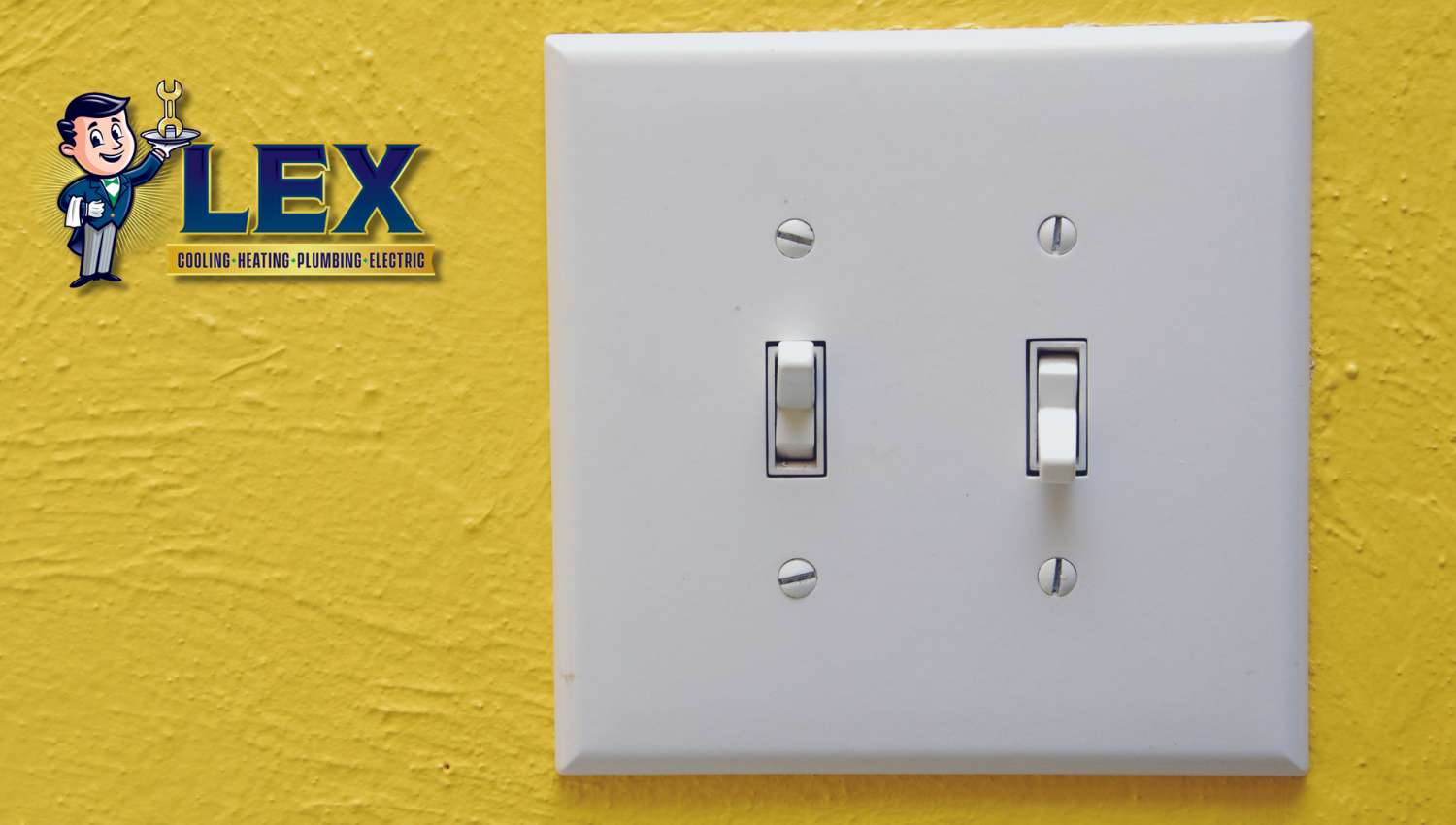Have you ever flipped a light switch, and nothing happened? Or perhaps the lights flicker or the switch feels warm to the touch? Knowing how to tell if a light switch is bad can save you from unexpected inconveniences and even potential fire hazards. That’s why it’s incredibly important to be aware of these warning signs and help keep your home’s electrical system functioning safely.
If you’re dealing with any of these light switch issues or suspect a bad switch, don’t wait to take action. Call Lex Electric in Carrollton, Texas at (972) 217-8955 as soon as possible. Our professional electricians can handle everything from replacing old switches to addressing problems with your electrical panel, rewiring your home, and so much more. Whatever your electrical needs, trust Lex to get the job done right.
How Does a Light Switch Work?
A light switch works by controlling the flow of electricity to your light bulb or light fixture. When you flip the wall switch to the “on” position, it completes the electrical circuit, allowing electricity to flow, and the light turns on. Flipping it to “off” breaks the circuit, and the light goes off.
Inside the switch, wire connections and terminal screws link the electrical wiring together, and the ground wire helps keep your home’s electrical system safe. Different types of switches, like single pole switches and dimmer switches, let you control your lights in various ways.
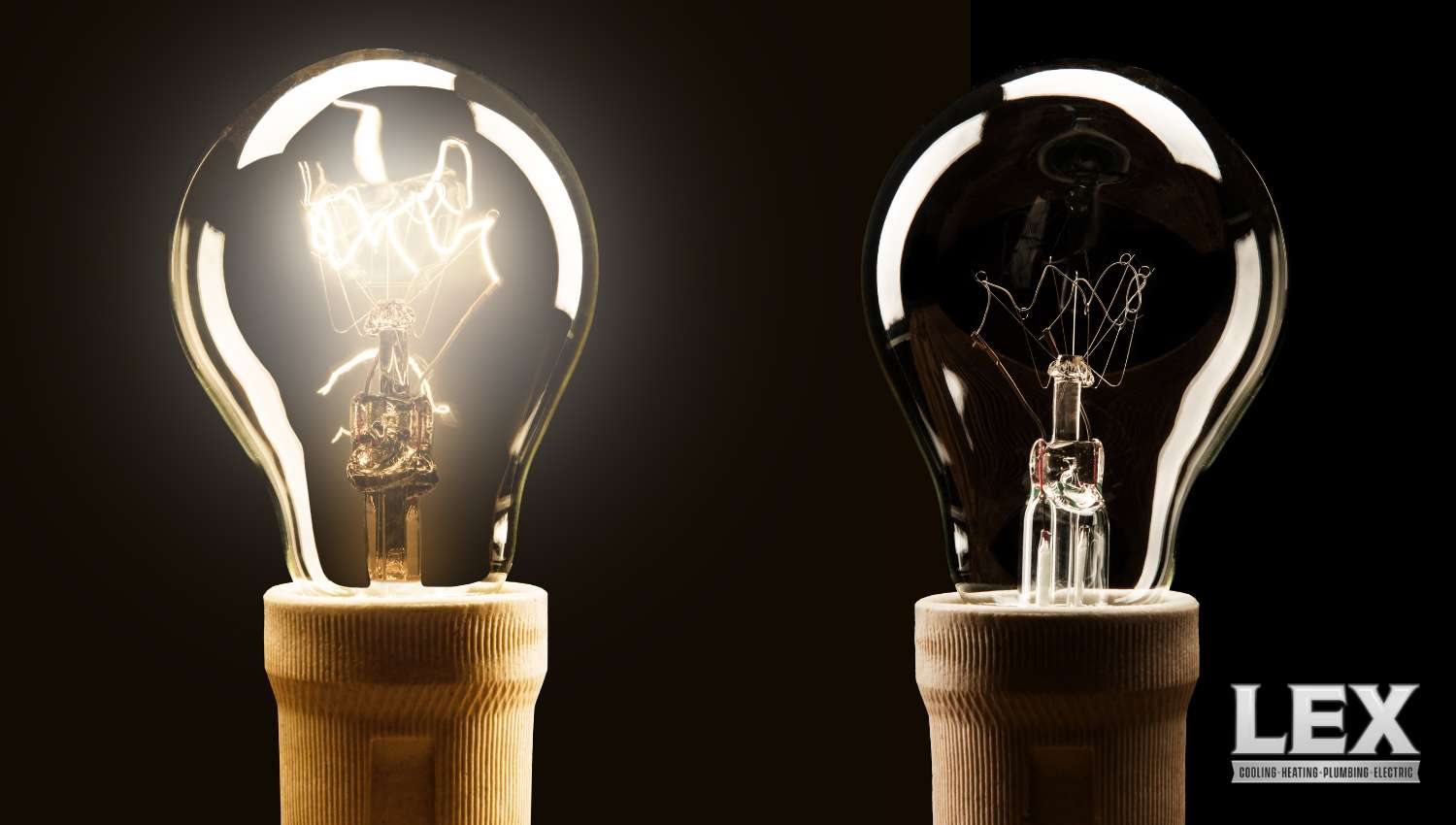
Do Light Switches Go Bad?
Yes, light switches can go bad. Over time, the electrical wiring and wire connections inside a wall switch can wear out. You might notice problems with light switches, such as a switch feeling warm to the touch, flickering lights, or unusual sounds when you flip the toggle lever. These are common signs of a faulty light switch that requires inspection and may need to be replaced.
If your light switch is bad, it can do more than just cause issues with your light fixtures – it can potentially become a fire hazard. With that in mind, it’s important to address faulty light switches promptly. A professional Carrollton electric company like Lex Electric can help with repairs or install a new light switch to keep your home’s electrical system safe and functional.
Why is My Light Switch Not Working?
There are several reasons why a light switch might not be working properly:
- Faulty Switch: Over time, the internal components of a light switch can wear out, leading to poor or no electrical connection. This is especially common in older switches that have been used frequently.
- Loose Wiring: If the wiring inside the switch box becomes loose or disconnected, the circuit may be interrupted, causing the light switch to fail.
- Tripped Circuit Breaker: If too much electricity is drawn on a circuit, the breaker may trip, cutting off power to the light switch.
- Burned-Out Bulb: Sometimes the issue isn’t the switch but rather the light bulb itself. A burned-out bulb will result in no light, giving the impression that the switch isn’t working.
- Faulty Fixture: The light fixture connected to the switch might be faulty, not the switch itself. If the wiring in the fixture or the bulb socket is damaged, the light won’t turn on.
- Power Supply Issues: If there’s a larger electrical problem in your home, such as a blown fuse or a faulty electrical panel, the switch might not receive any power, preventing it from working.
- Short Circuit: A short circuit in the wiring leading to the light switch can cause it to malfunction.
Identifying the underlying cause is key to determining whether you can fix the issue yourself or need help from a professional electrician.
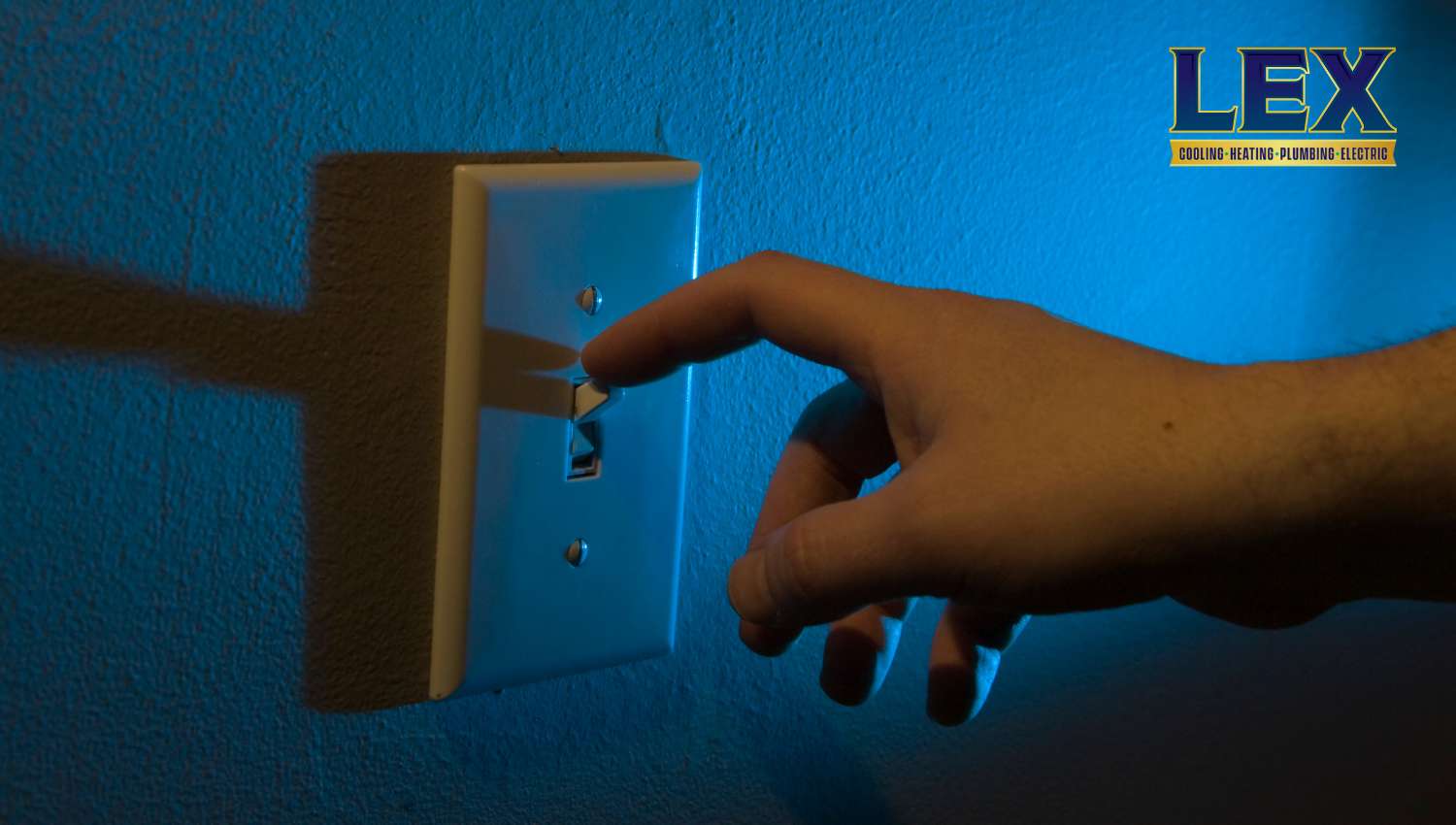
Signs of a Bad Light Switch
A properly functioning light switch is essential for the safety and efficiency of your home’s electrical system. However, certain signs may indicate that it’s time to replace the switch. If you notice a temperamental light fixture, flickering lights, buzzing sounds, or feel heat or an electric shock when touching the switch, these are all clear indicators of a potential issue. In such cases, it’s important to address the problem before the switch fails completely, potentially causing safety risks.
Below, we’ll dive deeper into the most common signs that your light switch may need to be replaced.
Light Switch Doesn’t Work Consistently
If your light switch works sometimes but not always, it could be due to a faulty light switch or loose connections in the electrical wiring. A failing light switch can cause your light fixtures to act unpredictably. Try flipping the wall switch multiple times to see if the issue persists. If the problem continues, it could indicate a bad switch that needs replacing.
Light Switch Not Turning Off
When a light switch doesn’t turn off the light bulb, it could be a sign of a stuck toggle lever or damaged terminal screws inside the electrical box that are preventing the circuit from opening. This means the light fixture stays on even when the wall switch is in the off position.
Flickering Lights
A faulty light switch might not maintain a complete circuit, causing the light bulb to flicker or dim unexpectedly. Loose connections at the side terminals or in the electrical box can also cause this issue. Taking care of these light switch problems promptly can prevent further damage and potential fire hazards.
Light Switch Making Unusual Noises
If your light switch is making buzzing, clicking, or popping sounds, it could also point to a faulty switch or damaged wiring. Ignoring these unusual sounds can lead to serious problems, including electrical fires. It’s important to have a professional electrician inspect the noisy switch to keep your home’s electrical system safe.
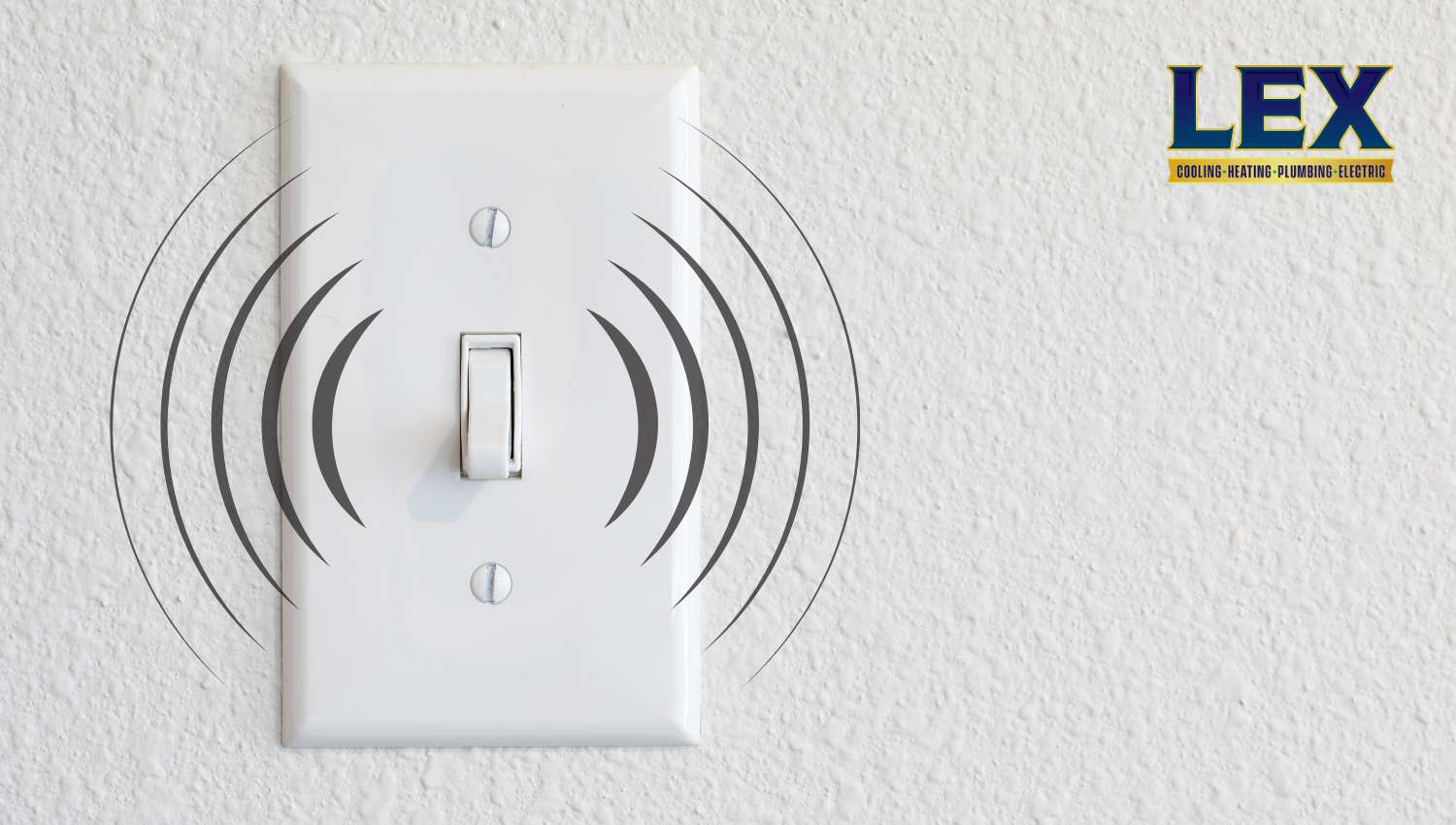
Why is My Light Switch Buzzing?
A buzzing light switch often means there’s a problem with loose wiring, a faulty switch, or an overload on the circuit. It can also happen if a dimmer switch is being used with incompatible bulbs, such as certain types of LEDs or CFLs.
Switch Feels Warm to the Touch
If your wall switch feels warm to the touch, it is often a sign of a more serious electrical issue and should not be ignored.
Why is My Light Switch Hot?
A hot or even warm switch may indicate that the switch is overloaded, meaning too much electrical current is flowing through it, or there could be a loose connection in the wiring causing resistance and heat buildup. Dimmer switches often run warmer than regular switches due to the way they regulate voltage, but they should not become excessively hot. If your light switch is noticeably hot to the touch, it’s important to stop using it and contact an electrician immediately to prevent fire hazards or electrical damage.
Light Switch is Physically Damaged
Visible damage like cracks, breaks, or discoloration on your switch cover plate or switch plate can indicate a bad light switch. Physical damage can expose electrical wires or lead to loose connections. Replacing old switches or damaged wall switches with a new light switch can help maintain a safe home and electrical system.
Getting Shocked By Light Switch
Getting shocked by a light switch is a clear sign that something is wrong and the switch may need to be replaced. This could indicate faulty wiring, a loose connection, or internal damage within the switch, all of which can expose you to electrical currents. A worn or damaged switch might not properly contain the electrical flow, allowing electricity to escape and cause a shock when touched. If you experience a shock, it’s important to stop using the switch and have it inspected or replaced by an electrician to avoid further risks.

How To Test a Light Switch Without Removing It
There are a couple of ways you can test a light switch without removing it from the wall. However, both options require the use of specialized tools: a non-contact voltage tester or a continuity tester (or rather, a multimeter set on continuity settings).
Here’s how you can do it with a non-contact voltage tester:
- Turn off the power at the circuit breaker for safety.
- Once the power is off, turn the power back on and place the tester near the switch. If the switch is working correctly and there is power, the tester will indicate the presence of voltage.
- Flip the switch on and off to see if the tester detects a change in voltage. If there’s no change, the switch may be faulty.
Here’s how to test the switch with a multimeter:
- Set the multimeter to test for voltage.
- Place the multimeter leads on the switch terminals without removing the switch from the wall.
- When the switch is turned on, the multimeter should show a voltage reading. When the switch is off, it should read zero or near zero. If the readings don’t change properly, the switch might need replacement.
Both of these methods allow you to test the functionality of the switch without needing to remove it from the wall. However, you should always exercise caution when dealing with electrical components like these, and if you’re not comfortable doing so, be sure to call a professional electrician who can test the switch for you.
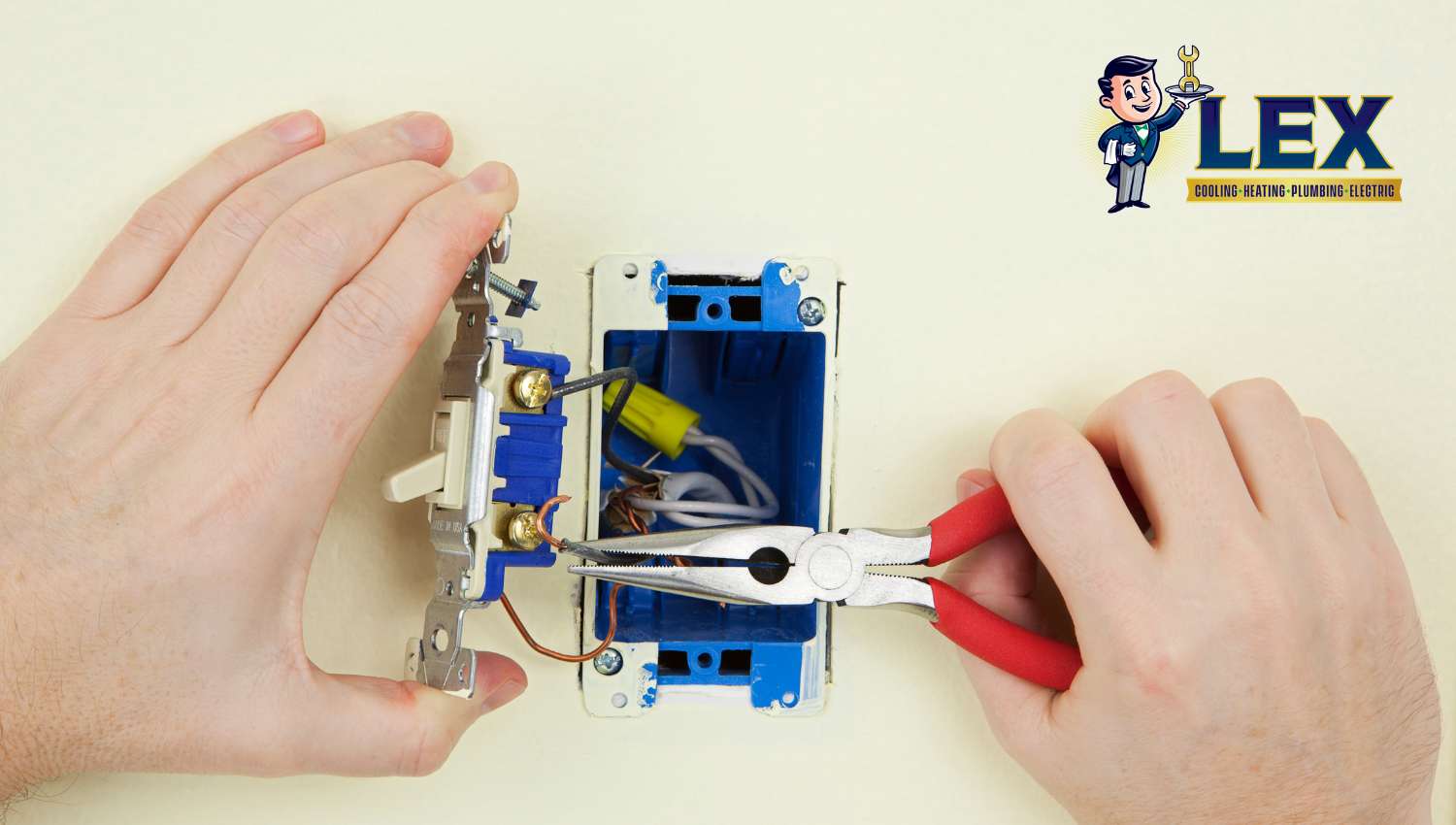
How To Fix a Light Switch
Fixing a faulty light switch can be relatively straightforward, but safety should always come first. If you’re dealing with light switch issues like flickering lights or a switch that doesn’t respond, here’s how to address the problem yourself. Remember, however, that working with electrical systems can be risky, so it’s best to consult a professional electrician if you’re unsure.
- Turn Off the Power: Go to your breaker box and flip the circuit breaker that controls the faulty light switch. This cuts off the electrical load and makes it safe to work on. Before continuing, be sure to test the switch by flipping it on and off to confirm the power is off.
- Remove the Switch Cover Plate: Use a screwdriver to remove the cover plate from the wall and expose the switch.
- Unscrew the Switch: Unscrew the mounting screws holding the switch in place and gently pull it out from the electrical box to access the switch wiring behind it.
- Inspect the Switch: Look for signs of a bad switch, such as damaged wiring, loose wires, or burnt terminal screws.
- Disconnect the Old Switch: Carefully loosen the terminal screws and remove the circuit wires from the old switch. Typically, a single-pole light switch has three wires: two black (or hot) wires and a green or bare copper ground wire. Take note of how these wires are connected.
- Install the New Switch: Attach the circuit wires to the corresponding terminals on the new light switch. The black (hot) wires go to the brass screws, and the green or bare wire goes to the green ground screw. Ensure all connections are tight and secure.
- Reassemble and Test: Tuck the switch wires back into the electrical box and screw the new switch into place with the appropriate mounting screws. Once secure, screw on the switch plate and turn the circuit breaker back on. Flip the toggle lever to the on and off position a few times to see if the light fixture works properly.
By following these steps, you should be able to replace a failing light switch and resolve these common light switch problems on your own. Be sure to always exercise caution when working with electrical wires, and don’t hesitate to call a professional if you’re uncomfortable performing electrical repairs yourself.
How To Tell if You Need an Electrician
If you’re facing light switch problems and you either don’t feel comfortable attempting to test or replace the switch yourself or you already tried and failed, it’s time to call in a professional electrician. In some cases, the switch itself might not be to blame and the problem might be due to damaged wiring or further electrical problems, requiring the help of a skilled professional to safely assess and repair.
Attempting DIY electrical repairs without proper knowledge can be risky. For one, handling electrical wires and circuit breakers without experience can lead to serious injuries like electric shocks. Incorrect wire connections or creating a load arc can also cause electrical fires in your home, leading to potentially catastrophic damage. Not only that, but DIY repair mistakes can result in more damage and more costly repairs down the line.
When in doubt, always contact a professional who can handle these light switch issues safely and effectively.
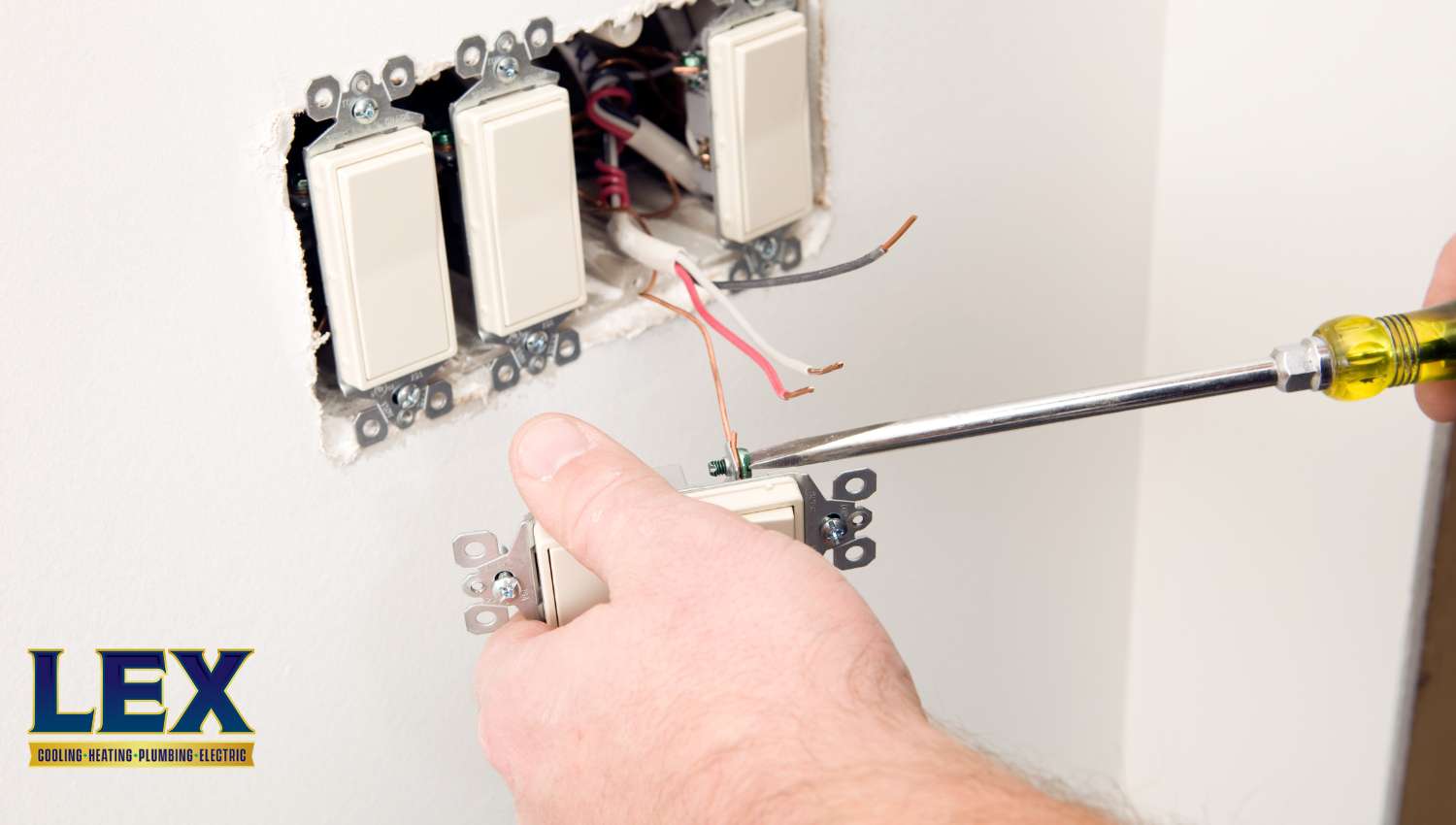
Dealing With a Faulty Light Switch? The Carrollton Electricians at Lex Electric Can Help
Dealing with a faulty light switch can be frustrating and even dangerous. Whether it’s a dimmer switch not adjusting properly, a wall switch making unusual sounds, or a single pole switch that has simply stopped working, the Carrollton electricians at Lex Electric can help. Our professional electricians are experienced in handling all types of light switch problems, from loose connections and damaged wiring to issues with the breaker box and more. When you call on us, we can test the functionality of your switch and, if necessary, replace your old switch with a new switch and get your light fixtures working properly and safely once again.
When it’s time to call in the experts, be sure to contact Lex Electric at (972) 217-8955 for reliable Carrollton lighting installation and electrical repairs.

